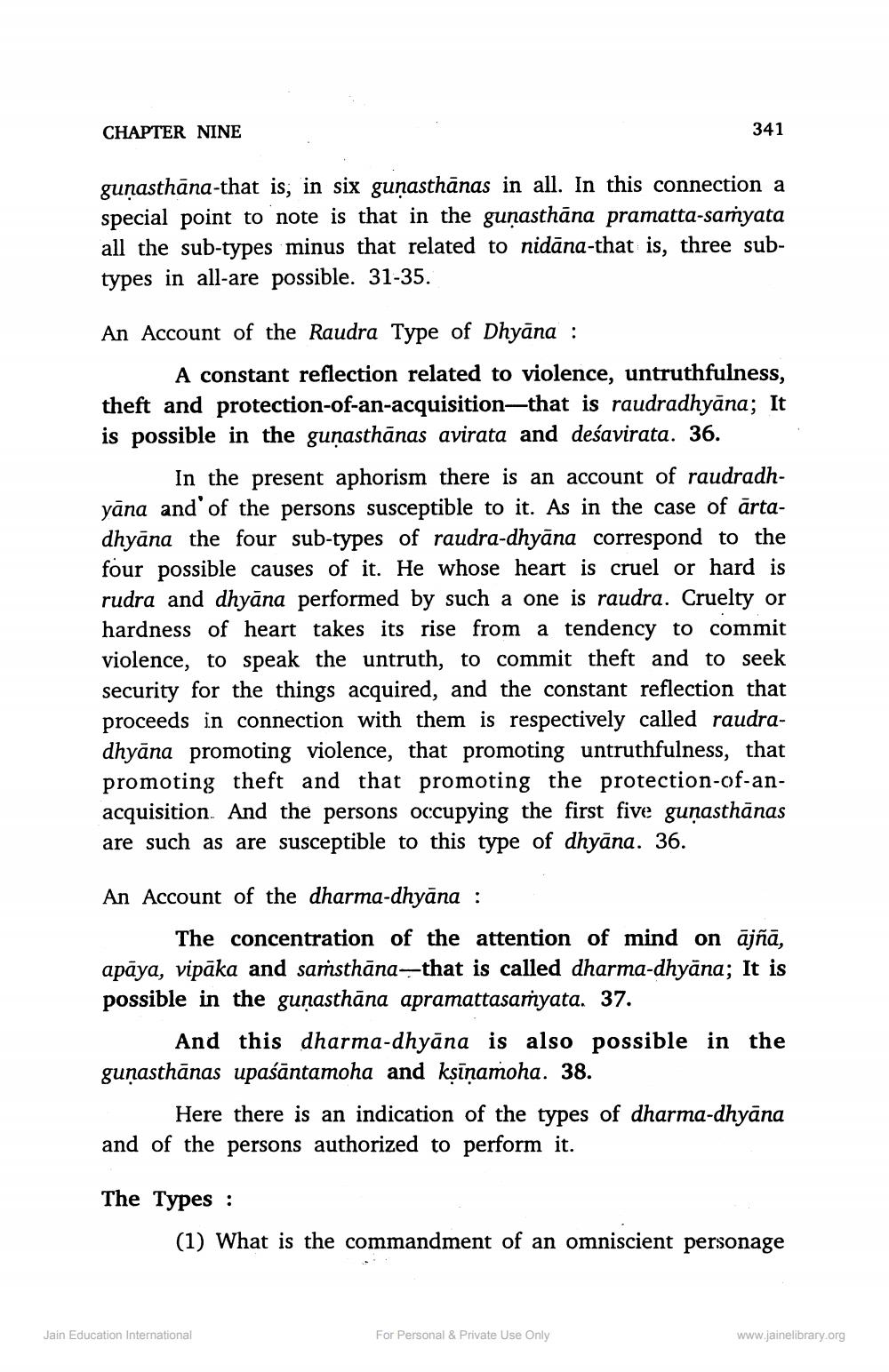________________
CHAPTER NINE
341
gunasthāna-that is, in six gunasthānas in all. In this connection a special point to note is that in the guṇasthāna pramatta-samyata all the sub-types minus that related to nidāna-that is, three subtypes in all-are possible. 31-35.
An Account of the Raudra Type of Dhyāna :
A constant reflection related to violence, untruthfulness, theft and protection-of-an-acquisition—that is raudradhyāna; It is possible in the guṇasthānas avirata and deśavirata. 36.
In the present aphorism there is an account of raudradhyāna and of the persons susceptible to it. As in the case of artadhyāna the four sub-types of raudra-dhyāna correspond to the four possible causes of it. He whose heart is cruel or hard is rudra and dhyāna performed by such a one is raudra. Cruelty or hardness of heart takes its rise from a tendency to commit violence, to speak the untruth, to commit theft and to seek security for the things acquired, and the constant reflection that proceeds in connection with them is respectively called raudradhyāna promoting violence, that promoting untruthfulness, that promoting theft and that promoting the protection-of-anacquisition. And the persons occupying the first five guṇasthānas are such as are susceptible to this type of dhyāna. 36.
An Account of the dharma-dhyāna :
The concentration of the attention of mind on ājñā, apāya, vipāka and saṁsthāna--that is called dharma-dhyāna; It is possible in the gunasthāna apramattasamyata. 37.
And this dharma-dhyāna is also possible in the gunasthānas upaśāntamoha and ksīņamoha. 38.
Here there is an indication of the types of dharma-dhyāna and of the persons authorized to perform it.
The Types :
(1) What is the commandment of an omniscient personage
Jain Education International
For Personal & Private Use Only
www.jainelibrary.org




